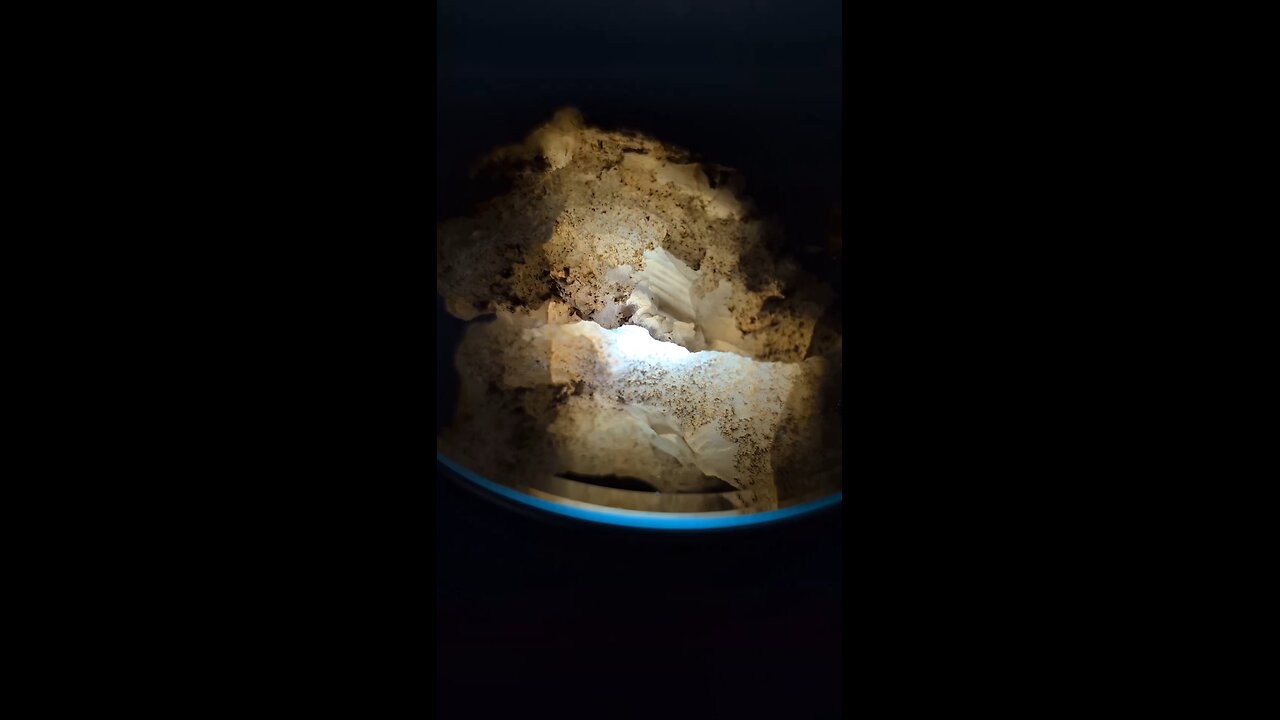Premium Only Content

Agate Glow!
Agate is a microcrystalline variety of quartz, specifically a form of chalcedony, known for its fine grain and bright color patterns. Here are some key points about agate:
Formation: Agate forms in volcanic and sedimentary rocks. It often begins as a cavity in the rock, which then gets filled with layers of silica-rich water. Over time, this solution deposits minerals in layers, creating the characteristic banding of agate. This process can take millions of years.
Appearance: Agate is famous for its beautiful, often banded patterns of color, which can range from translucent to opaque. Colors include white, blue, red, black, yellow, and brown among others, with the patterns formed by the successive layers of chalcedony being deposited. Sometimes, agates can be found with inclusions like moss (moss agate) or even fossils.
Types of Agate:
Banded Agate: Shows clear, concentric bands of color.
Moss Agate: Contains mineral inclusions that look like moss or foliage.
Dendritic Agate: Similar to moss agate but with tree-like or branch-like patterns.
Fire Agate: Contains iridescent layers that appear to glow with fiery colors.
Lace Agate: Features lace-like patterns, most notably in Blue Lace Agate from Namibia.
Crazy Lace Agate: Known for its wild, chaotic patterns of colors.
Locations: Agates are found worldwide, but some of the most famous locations include Brazil, Uruguay, Mexico, Germany, Madagascar, and the United States (particularly in Oregon, Washington, and Idaho).
Uses:
Jewelry: Due to its beauty when polished, agate is widely used in jewelry like rings, pendants, and beads.
Decorative Items: Larger pieces or slices are used for decorative objects, bookends, or as display pieces.
Metaphysical: In metaphysical practices, agate is believed to have various healing properties, like balancing physical, emotional, and intellectual energy, and promoting strength and courage.
Cultural Significance: Agate has been used since ancient times; it was prized in Ancient Egypt for amulets and seals, in Greece and Rome for intaglios and cameos, and by many other cultures for its beauty and supposed protective qualities.
Cutting and Polishing: When cutting agate for jewelry or display, lapidaries look for the most visually appealing patterns. The process involves sawing, grinding, and polishing to bring out the internal beauty of the stone.
Agate's diversity in color and pattern, combined with its durability, makes it one of the most sought-after stones in the world of gemology and mineral collecting.
-
 LIVE
LIVE
LFA TV
10 hours agoLIVE & BREAKING NEWS! | WEDNESDAY 10/8/25
3,426 watching -
 LIVE
LIVE
Crypto Power Hour
1 hour ago $0.12 earnedSwift Vs Blockchain, Battle for The Future Of Banking
80 watching -
 58:58
58:58
JULIE GREEN MINISTRIES
2 hours agoTHE REAL SHOW IS ABOUT TO BEGIN
77.7K105 -
 1:20:59
1:20:59
Game On!
21 hours ago $2.58 earnedMLB Playoff UPDATE! The Yankees Are DONE!
22.6K2 -
 LIVE
LIVE
The Bubba Army
23 hours agoEpstein Trump PICS? | Bubba the Love Sponge® Show | 10/08/2025
1,202 watching -
 28:54
28:54
Producer Michael
16 hours agoANSWERING YOUR MOST IMPORTANT QUESTIONS!
25.2K7 -
 8:24
8:24
Hollywood Exposed
14 hours agoCNN Host Turns on Democrats LIVE And Bill Maher Can’t Believe It!
21.3K23 -
 30:59
30:59
Uncommon Sense In Current Times
18 hours ago $1.50 earnedImmigration, Crime & Justice Reform | Brett Tolman on Borders, Cartels & the First Step Act
27K5 -
 15:36
15:36
The Gun Collective
14 hours agoWOW! Tons of NEW GUNS just dropped!
17.8K14 -
 2:01:34
2:01:34
BEK TV
1 day agoTrent Loos in the Morning - 10/08/2025
20.7K1
